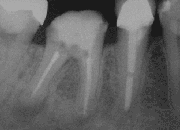Aristotelis Zervoudis
Greek obstetrician and gynecologist
Aristotelis Zervoudis is a renowned Greek obstetrician and gynecologist, known for his contributions to the field of breast cancer treatment and gynecological surgery. He has been influential in advancing medical practices and education in Greece and internationally.
Early Life and Education[edit | edit source]
Aristotelis Zervoudis was born in Greece, where he developed an early interest in medicine. He pursued his medical degree at the University of Athens, where he graduated with honors. Following his undergraduate studies, Zervoudis specialized in obstetrics and gynecology, completing his residency at a leading hospital in Athens.
Career[edit | edit source]
Zervoudis began his career as a practicing obstetrician and gynecologist, quickly gaining a reputation for his expertise in minimally invasive surgery and oncology. He has held several prestigious positions in hospitals across Greece and has been a visiting professor at various international institutions.
Contributions to Breast Cancer Treatment[edit | edit source]
Zervoudis is particularly noted for his work in breast cancer treatment. He has pioneered techniques in breast-conserving surgery and has been involved in numerous clinical trials aimed at improving patient outcomes. His research has focused on the early detection and treatment of breast cancer, emphasizing the importance of personalized medicine.
Academic and Teaching Roles[edit | edit source]
In addition to his clinical work, Zervoudis is a dedicated educator. He has taught at the University of Athens and other institutions, where he has mentored many students and young doctors. His teaching emphasizes the integration of clinical practice with research, encouraging students to pursue innovative approaches in their medical careers.
Awards and Recognition[edit | edit source]
Throughout his career, Zervoudis has received numerous awards for his contributions to medicine. In 2018, he was honored with the title of Cavaliere, recognizing his impact on the field of gynecology and his service to the medical community.
Related Pages[edit | edit source]
External Links[edit | edit source]
- [Official website of Aristotelis Zervoudis]
Search WikiMD
Ad.Tired of being Overweight? Try W8MD's physician weight loss program.
Semaglutide (Ozempic / Wegovy and Tirzepatide (Mounjaro / Zepbound) available.
Advertise on WikiMD
|
WikiMD's Wellness Encyclopedia |
| Let Food Be Thy Medicine Medicine Thy Food - Hippocrates |
Translate this page: - East Asian
中文,
日本,
한국어,
South Asian
हिन्दी,
தமிழ்,
తెలుగు,
Urdu,
ಕನ್ನಡ,
Southeast Asian
Indonesian,
Vietnamese,
Thai,
မြန်မာဘာသာ,
বাংলা
European
español,
Deutsch,
français,
Greek,
português do Brasil,
polski,
română,
русский,
Nederlands,
norsk,
svenska,
suomi,
Italian
Middle Eastern & African
عربى,
Turkish,
Persian,
Hebrew,
Afrikaans,
isiZulu,
Kiswahili,
Other
Bulgarian,
Hungarian,
Czech,
Swedish,
മലയാളം,
मराठी,
ਪੰਜਾਬੀ,
ગુજરાતી,
Portuguese,
Ukrainian
Medical Disclaimer: WikiMD is not a substitute for professional medical advice. The information on WikiMD is provided as an information resource only, may be incorrect, outdated or misleading, and is not to be used or relied on for any diagnostic or treatment purposes. Please consult your health care provider before making any healthcare decisions or for guidance about a specific medical condition. WikiMD expressly disclaims responsibility, and shall have no liability, for any damages, loss, injury, or liability whatsoever suffered as a result of your reliance on the information contained in this site. By visiting this site you agree to the foregoing terms and conditions, which may from time to time be changed or supplemented by WikiMD. If you do not agree to the foregoing terms and conditions, you should not enter or use this site. See full disclaimer.
Credits:Most images are courtesy of Wikimedia commons, and templates, categories Wikipedia, licensed under CC BY SA or similar.
Contributors: Prab R. Tumpati, MD


